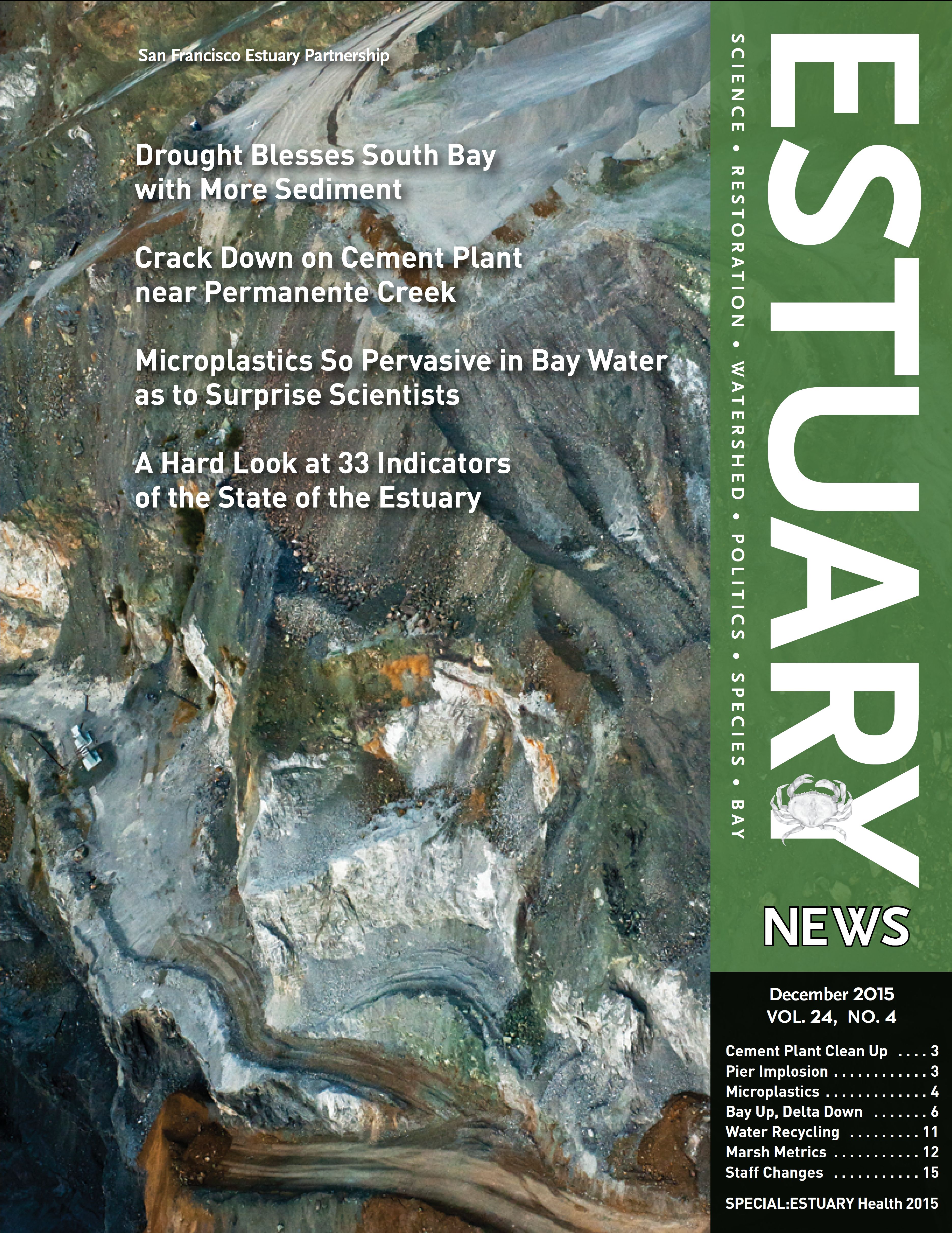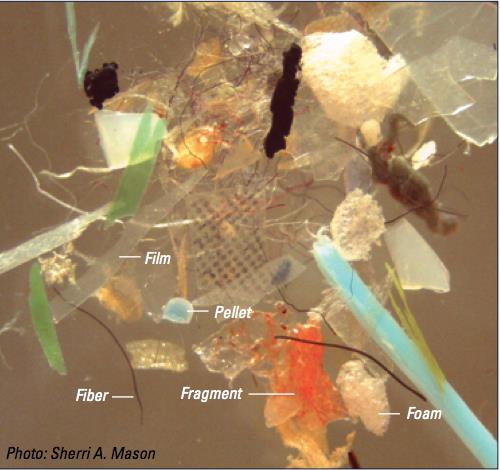
DOWNLOAD December 2015 ISSUE PDF
by Jacoba Charles
Millions of tiny pieces of plastic, each less than five millimeters wide, are flowing into San Francisco Bay each day. This minute debris—known as microplastic—is a growing environmental concern for water bodies worldwide as it evades filtration and mimics food consumed by wildlife.
Now, a recent study found that San Francisco Bay has higher concentration of microplastic pollution than the handful of other major U.S. water bodies that have been studied, including the Great Lakes and Chesapeake Bay.
“The levels that we found surprised me,” says Dr. Rebecca Sutton, a senior scientist with the San Francisco Estuary Institute, who headed up the study. “I did expect to find microplastics, but I didn’t expect that our levels would be a lot higher than in other regions.”
 The reasons for this likely include high population density and the relative size of the bay, Sutton says.
The reasons for this likely include high population density and the relative size of the bay, Sutton says.
Microplastic pollution has myriad sources, from tiny beads added to beauty products to the breakdown of larger debris such as plastic bags or Styrofoam. A new California state law will ban the use of cosmetic microbeads starting in 2020, but for now they are still being used in a broad array of products including face wash, toothpaste, and nail polish.
The study tested water from nine sites in the bay, discharge from eight different wastewater treatment plants, and the stomach contents of nine small fish. Microplastics were found in all samples.
“We were shocked by the results,” says Karin North, Watershed Protection Manager at City of Palo Alto, which operates one of the treatment plants sampled in the study. “We have one of the more sophisticated plants in the Bay Area and it’s disheartening that we can’t remove it.”
But retrofitting treatment plants to provide microfiltration or reverse osmosis that would successfully remove microplastics from the waste stream would be prohibitively expensive.
“Upgrading the plants would cost taxpayers billions—multiple billions—of dollars,” North says.
Fibers were the single largest type of microplastic found in the treatment plant discharge. These are often created by laundering synthetic fabrics such as polyester or acrylic, among other sources, North said. The tiny, fine hairs break off, get flushed into the treatment plant, and are so small that they slip straight through the filters and into the bay.
 “We already had microbeads on the radar. But the fiber aspect is something new,” North says. “They are so tiny that you can barely see them with the naked eye.”
“We already had microbeads on the radar. But the fiber aspect is something new,” North says. “They are so tiny that you can barely see them with the naked eye.”
Microplastics of all sorts are worrying because wildlife and other creatures can mistake the tiny particles for food; one study found that corals were starving due to microplastics consumption.
Additionally, microplastics have been found to preferentially absorb toxic pollutants such as pesticides, dioxins, flame retardants, and PCBs, Sutton said. She added that it is also possible that some of those contaminants could move up the food chain.
“Because they float, they tend to collect other chemical pollutants in the water,” says Andria Ventura with the nonprofit group Clean Water Action. “Those molecules actually glom onto the plastic so they become little poison pills.”
Ultimately, the only way to keep microplastics out of waterways is to stop them from entering the waste stream in the first place, North says. While some sources, such as microbeads, can be managed through legislation, it would remain up to consumers to avoid others—such as polar fleece, plastic bags, or take-out containers.
“This is not waste that can be broken down. If you can remove it at the source it’s always better than if you try to clean it up at the treatment plant,” says North. “It’s like going back to being a tree hugger—wearing natural fibers and not using plastics. That really is the message.”
CONTACT Dr. Rebecca Sutton
Fact Sheet: sfei.org/microplasticfacts